Austria Logistics and Warehousing Market Outlook to 2029
By Market Structure, By Type of Services, By End-User Industries, By Mode of Transportation, By Type of Warehousing, and By Region
- Product Code: TDR0207
- Region: Europe
- Published on: July 2025
- Total Pages: 110
Introducing the World's FirstPay-Per-Section Market Reports
Why pay for the full report when you need just a part?
Start Building Your Report
Scroll down to see available sections
Report Summary
The report titled “Austria Logistics and Warehousing Market Outlook to 2029 – By Market Structure, By Type of Services, By End-User Industries, By Mode of Transportation, By Type of Warehousing, and By Region” provides a comprehensive analysis of the logistics and warehousing industry in Austria. The report covers an overview and genesis of the industry, overall market size in terms of revenue, market segmentation, key trends and developments, regulatory landscape, customer-level profiling, challenges and constraints, and comparative landscape including competition scenario, cross-segment comparison, opportunities and bottlenecks, and company profiling of major logistics and warehousing service providers. The report concludes with future market projections based on revenue, service offerings, geographic expansion, cause-and-effect relationships, and success case studies highlighting major opportunities and risk factors.
Austria Logistics and Warehousing Market Overview and Size
The Austria logistics and warehousing market reached a valuation of EUR 8.6 Billion in 2023, supported by the country’s strategic location in Central Europe, its advanced infrastructure, and growing demand for integrated supply chain solutions across manufacturing, retail, and e-commerce sectors. The market is characterized by the presence of leading players such as Gebrüder Weiss, DB Schenker, Quehenberger Logistics, Kuehne + Nagel, and Lagermax. These companies are recognized for their strong service capabilities across freight forwarding, contract logistics, last-mile delivery, and temperature-controlled warehousing.
In 2023, Quehenberger Logistics launched a multi-client automated warehouse facility in Upper Austria to cater to rising demand from the FMCG and fashion sectors. Vienna and Linz continue to dominate as key logistics hubs due to their proximity to major road and rail corridors, cross-border connectivity, and industrial concentration.
Market Size for Austria Logistics and Warehousing Industry on the Basis of Revenue in USD Billion, 2018-2024
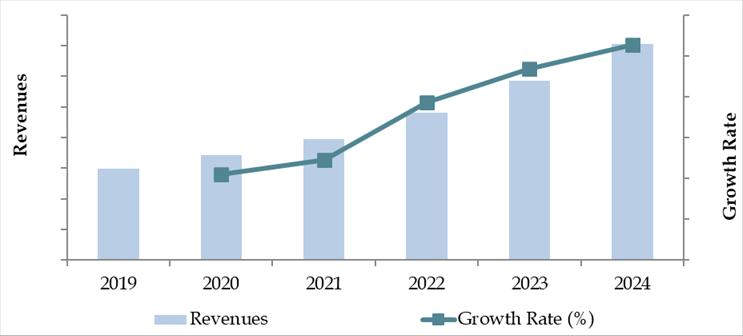
What Factors are Leading to the Growth of Austria Logistics and Warehousing Market:
Strategic Location and Trade Integration: Austria's geographic location at the heart of Europe and its membership in the European Union have positioned it as a key transit and distribution hub. Approximately 74% of Austria’s freight volume in 2023 was attributed to cross-border trade with Germany, Italy, and the CEE region, bolstering demand for transit and customs clearance services.
E-commerce and Consumer Behavior: The rapid growth of e-commerce, with online retail sales crossing EUR 10 billion in 2023, has significantly impacted demand for urban warehousing, last-mile delivery, and fulfillment centers. 3PL providers are investing in automation, digital inventory management, and fleet optimization to meet these evolving consumer needs.
Infrastructure and Technology Advancement: Austria boasts a high-quality logistics infrastructure with over 2,200 km of highways, modern rail networks, and efficient intermodal terminals. Government incentives to digitalize logistics operations and promote green transport (e.g., low-emission fleets, rail freight subsidies) have encouraged logistics companies to adopt tech-enabled, sustainable practices.
Which Industry Challenges Have Impacted the Growth of Austria Logistics and Warehousing Market
Labor Shortages and Rising Wages: One of the key challenges facing Austria’s logistics sector is the shortage of skilled labor, particularly in warehousing and long-haul trucking. According to the Austrian Federal Economic Chamber, nearly 18% of logistics firms reported unfilled positions in 2023, impacting service quality and operational capacity. Additionally, rising labor costs — with average logistics wages growing by 4.5% YoY — have squeezed profit margins for SMEs and regional logistics providers.
Urban Congestion and Delivery Restrictions: In densely populated urban areas such as Vienna, Innsbruck, and Salzburg, increasing traffic congestion and regulatory restrictions on delivery hours have disrupted last-mile logistics. Studies show that average delivery times in urban zones rose by 12% between 2020 and 2023, leading to higher operational costs and lower customer satisfaction in e-commerce and B2B deliveries.
Infrastructure Bottlenecks: Although Austria has a strong transportation infrastructure, certain bottlenecks — particularly at border crossings and intermodal hubs — have led to capacity constraints. The Brenner corridor, a key north-south trade route, regularly faces truck restrictions and environmental toll regulations, affecting transit reliability. In 2023, over 1,500 hours of freight delay were recorded along this corridor.
What are the Regulations and Initiatives that have Governed the Market
Green Logistics Subsidies: The Austrian government, in alignment with EU Green Deal goals, offers subsidies and grants for the adoption of low-emission vehicles, sustainable warehouse designs, and digital route optimization. In 2023, EUR 85 million was allocated for green logistics initiatives, which supported over 600 logistics operators in upgrading to electric or hybrid fleets and sustainable building retrofits.
Transport Emission Regulations: Austria enforces strict emissions regulations for freight transport, particularly in alpine regions. These include night-time driving bans, sectoral driving prohibitions (e.g., for non-clean trucks), and environmental tolls under the ASFINAG tolling system. In 2023, more than 20% of diesel-heavy trucks were redirected or penalized due to non-compliance.
Warehouse and Fire Safety Codes: Warehousing operations are governed by a stringent regulatory framework focusing on fire safety, hazardous material storage, and occupational health. Inspections are mandatory for high-capacity warehouses and automated storage facilities. In 2023, approximately 92% of registered warehousing facilities passed their annual safety inspections without any critical violations.
Austria Logistics and Warehousing Market Segmentation
By Market Structure: The Austrian logistics and warehousing market is primarily driven by organized players, especially in urban and cross-border logistics operations. Large-scale logistics firms, such as DB Schenker, Kuehne + Nagel, and Gebrüder Weiss, dominate the market due to their integrated service offerings, advanced IT infrastructure, and strong B2B relationships. These companies provide end-to-end logistics solutions including freight forwarding, contract logistics, and value-added warehousing services. However, unorganized and regional operators continue to play a vital role in last-mile deliveries and rural freight, leveraging local networks and lower overhead costs to serve niche clients.
By Type of Services:Freight forwarding remains the dominant service vertical, accounting for a significant share due to Austria’s strategic position as a transit country within Europe. Contract logistics and warehousing have also grown rapidly, driven by increasing demand from e-commerce and FMCG sectors. In particular, temperature-controlled warehousing and fulfillment services are expanding due to rising pharmaceutical and food product demand. Last-mile delivery services are growing faster in urban centers where consumer expectations around delivery speed and flexibility are higher.
By Mode of Transportation:Road freight dominates the transportation mix in Austria due to its flexibility, network reach, and high-quality road infrastructure. Rail freight holds a notable share, supported by government initiatives promoting modal shift from road to rail, particularly for long-haul and cross-border shipments. Air freight is concentrated around Vienna International Airport, primarily catering to high-value or time-sensitive goods, while inland waterways serve limited but important functions along the Danube for bulk transport.

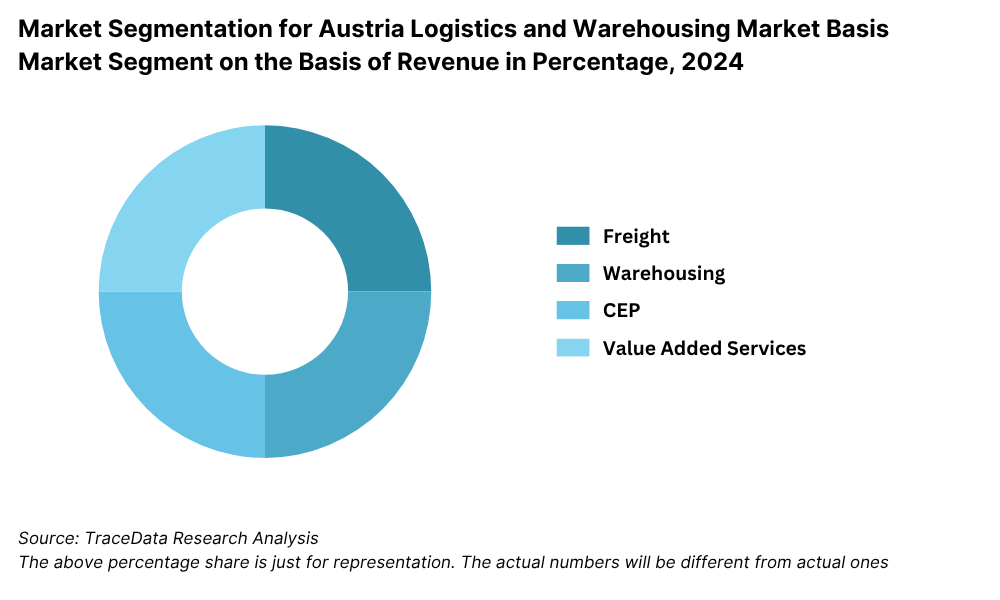
Competitive Landscape in Austria Logistics and Warehousing Market
The Austria logistics and warehousing market is moderately consolidated, with a mix of long-established players and newer entrants offering innovative, technology-driven services. Large players such as Gebrüder Weiss, DB Schenker, Quehenberger Logistics, Kuehne + Nagel, and Lagermax dominate the market due to their extensive regional presence, multimodal capabilities, and strong infrastructure. Meanwhile, a wave of digital freight platforms and specialized cold chain and urban logistics providers is adding diversity and competition to the ecosystem.
Company Name | Founding Year | Original Headquarters |
Gebrüder Weiss GmbH | 1474 | Lauterach, Austria |
Cargo-Partner GmbH | 1983 | Fischamend, Austria |
ÖBB Rail Cargo Group (Rail Cargo Austria) | 2004 (origins earlier) | Vienna, Austria |
LKW WALTER Internationale Transportorganisation AG | 1924 | Wiener Neudorf, Austria |
Quehenberger Logistics GmbH | 1965 | Straßwalchen, Austria |
Gebrüder Weiss Paketdienst (GWP) – now part of DPD Austria | 1988 | Vienna, Austria |
DB Schenker Austria | 1872 (AT: ~1920s) | Essen, Germany |
DHL Freight / Supply Chain Austria | 1969 (AT: ~1970s) | Bonn, Germany |
Kuehne + Nagel Austria | 1890 (AT: ~1900s) | Schindellegi, Switzerland |
UPS Austria | 1907 (AT: ~1980s) | Atlanta, USA |
FedEx Express Austria | 1971 (AT: ~1990s) | Memphis, USA |
Maersk Austria | 1904 (AT: ~1990s) | Copenhagen, Denmark |
DSV Air & Sea Austria GmbH | 1976 (AT: ~2000s) | Hedehusene, Denmark |
Rhenus Logistics Austria | 1912 (AT: ~1990s) | Holzwickede, Germany |
Yusen Logistics (Austria) GmbH | 1955 (AT: ~2000s) | Tokyo, Japan |
Nippon Express Austria GmbH | 1937 (AT: ~2000s) | Tokyo, Japan |
Logwin Solutions Austria GmbH | 1877 (as DELTA/Thiel, AT: ~1990s) | Grevenmacher, Luxembourg |
Some of the recent competitor trends and key information about market participants include:
Gebrüder Weiss: One of Austria’s oldest and most established logistics firms, Gebrüder Weiss reported a revenue of over EUR 3 billion globally in 2023, with Austria accounting for a significant share. The company invested in automated warehousing solutions and green fleet initiatives, aiming to reduce carbon emissions by 10% annually. In 2023, it opened a new logistics terminal in Wels to expand cross-border e-commerce capabilities.
DB Schenker Austria: Operating as part of the global DB Schenker network, the Austria unit continues to lead in freight forwarding and contract logistics. The company implemented AI-powered route optimization for road freight in 2023, resulting in a 7% reduction in delivery time. It also expanded rail freight operations to Eastern Europe, reinforcing its cross-border logistics capabilities.
Quehenberger Logistics: Known for its retail and fashion logistics expertise, Quehenberger reported a 15% YoY increase in fulfillment and last-mile services in 2023, largely driven by e-commerce growth. The company also launched a new multi-user warehouse in Upper Austria, featuring real-time inventory tracking and energy-efficient systems.
Kuehne + Nagel Austria: The Austrian arm of the Swiss global logistics provider has seen increasing demand in pharma logistics and temperature-controlled warehousing. In 2023, it partnered with major healthcare companies to provide GDP-compliant cold chain services, particularly for vaccine and biotech logistics across Central Europe.
Lagermax: Lagermax specializes in automotive logistics and warehousing and plays a critical role in distribution networks for OEMs across Austria and neighboring countries. The company reported growth in value-added services such as pre-delivery inspections and vehicle customization, and is expanding its warehousing footprint in southern Austria to cater to increased demand from industrial clients.
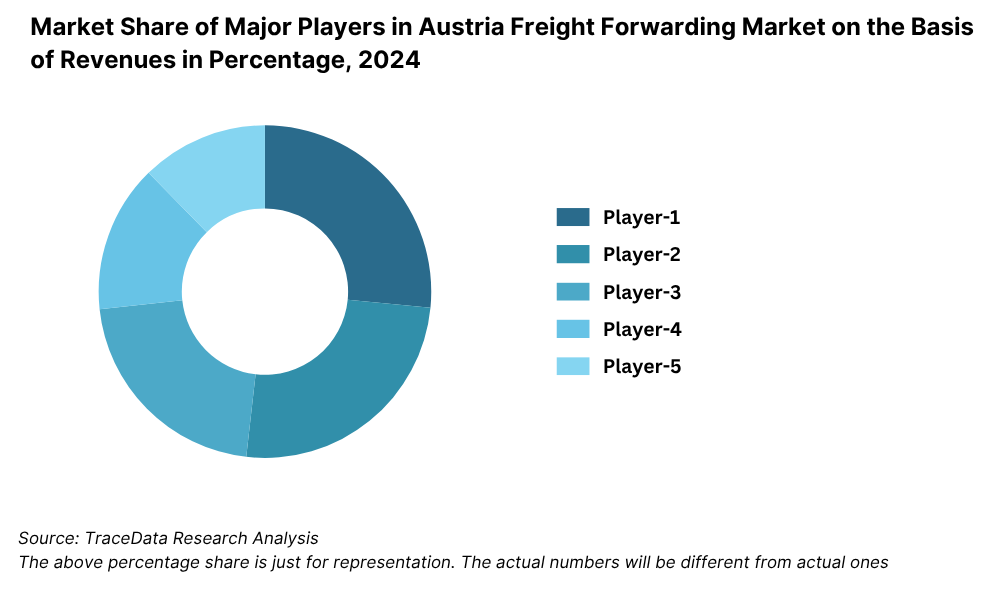
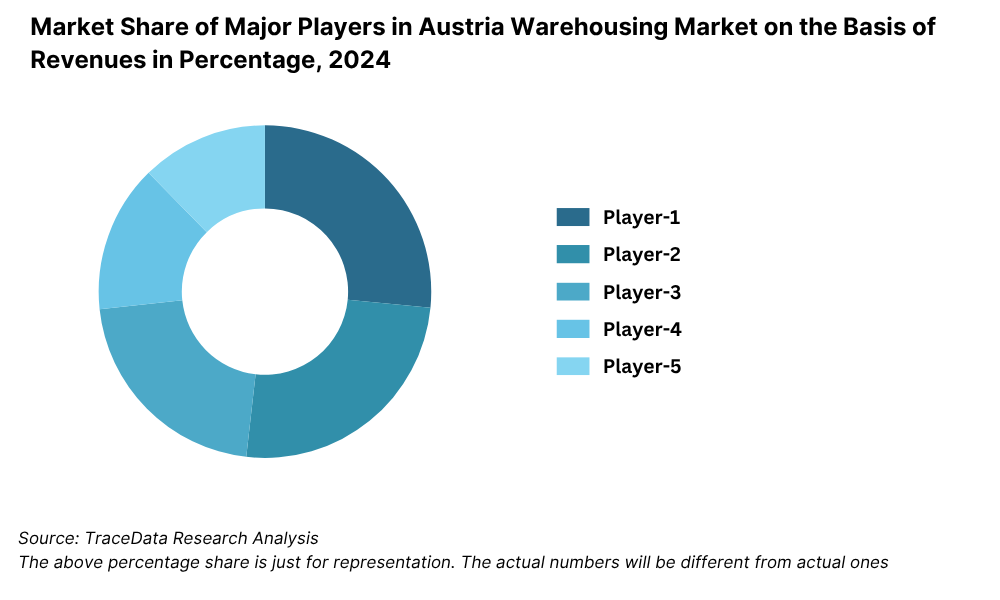
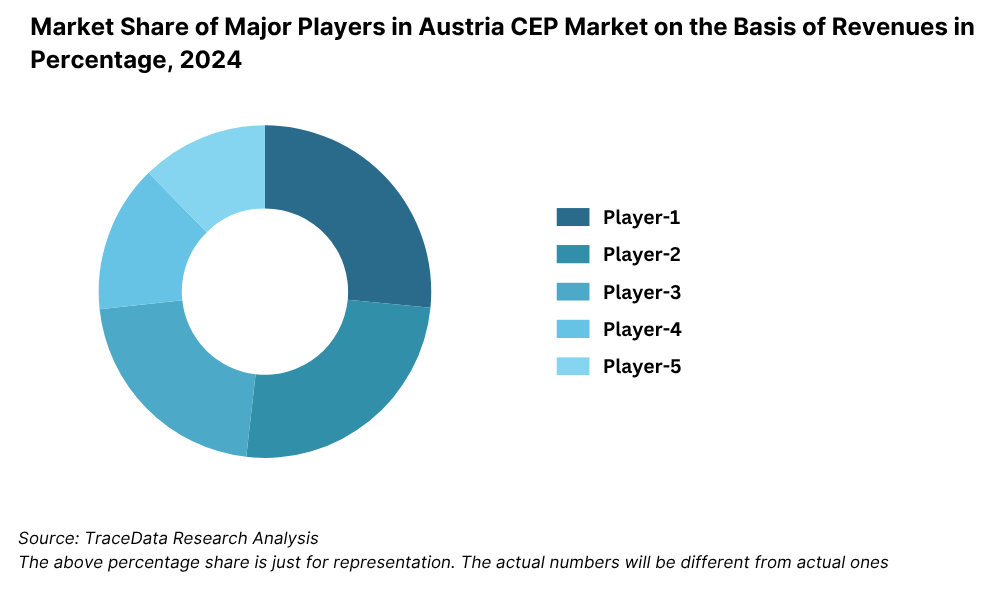
What Lies Ahead for Austria Logistics and Warehousing Market?
The Austria logistics and warehousing market is projected to grow steadily through 2029, supported by technological advancements, strategic trade positioning, sustainability mandates, and evolving consumer demands. The market is expected to register a moderate to high CAGR during the forecast period, with both traditional logistics providers and tech-driven startups contributing to its transformation.
Expansion of E-commerce and Urban Warehousing: With e-commerce sales in Austria expected to exceed EUR 13 billion by 2029, there will be increasing demand for urban and micro-fulfillment centers, particularly in cities like Vienna and Graz. These compact, tech-enabled warehouses will enable faster last-mile delivery, meeting rising consumer expectations for same-day or next-day fulfillment.
Rise of Green Logistics and Fleet Electrification: Environmental regulations and EU Green Deal targets will push logistics providers toward greener operations. By 2029, a significant share of fleets is expected to transition to electric or low-emission vehicles, supported by government subsidies and expanding charging infrastructure. Warehousing facilities will also move towards net-zero energy models with solar rooftops, energy-efficient designs, and green certifications.
Technological Integration and Automation: The adoption of IoT, AI, and robotics in warehousing and transport management is set to increase. Technologies such as automated guided vehicles (AGVs), predictive inventory systems, and digital freight platforms will enhance efficiency, reduce errors, and lower operating costs. By 2029, over 40% of Austrian warehouses are expected to use some form of automation or AI-driven inventory control.
Growth of Cold Chain Logistics: Austria’s pharmaceutical, food, and high-value perishables sectors are driving demand for cold chain solutions. With the rise in biologics, precision medicines, and export-oriented food production, investments in GDP-compliant and temperature-monitored warehousing and transport infrastructure are expected to surge.
Future Outlook and Projections for Austria Logistics and Warehousing Market on the Basis of Revenues in USD Billion, 2024-2029
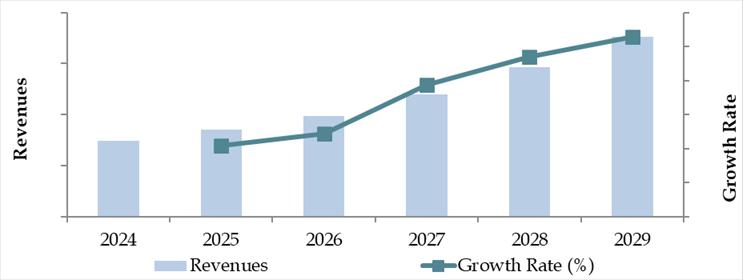
Austria Logistics and Warehousing Market Segmentation
• By Market Structure:
o Organized Sector
o Unorganized Sector
o Multinational 3PL Companies
o Local Regional Logistics Players
o Asset-Light Operators
o Value-Added Warehousing Providers
o State-Owned and Public Sector Logistics Entities
• By Type of Services:
o Freight Forwarding (Road, Rail, Air, Water)
o Contract Logistics
o Last-Mile Delivery
o Cold Chain Logistics
o Warehousing and Storage
o Customs Brokerage
o Inventory Management & Fulfillment
• By Mode of Transportation:
o Road Freight
o Rail Freight
o Air Freight
o Inland Waterways
o Multimodal/Intermodal Logistics
• By Type of Warehousing:
o General Purpose Warehouses
o Cold Storage Facilities
o Dry and Bonded Warehouses
o E-commerce Fulfillment Centers
o Automated Warehouses
o Distribution Hubs
• By End-User Industry:
o E-commerce and Retail
o Automotive and Machinery
o Pharmaceuticals and Healthcare
o Food and Beverage
o FMCG and Consumer Goods
o Construction and Industrial
o Textile and Fashion
• By Region:
o Eastern Austria (Vienna, Lower Austria, Burgenland)
o Central Austria (Styria, Upper Austria)
o Western Austria (Tyrol, Salzburg, Vorarlberg, Carinthia)
o Cross-border Corridors (Brenner, Vienna-Bratislava, Alpine Passes)
Players Mentioned in the Report:
Freight Forwarding Companies
- JAS Worldwide
- ACS Logistics GmbH & Co KG
- CARGOMIND Austria GmbH
- Danube Shipping Management Service GmbH
- IBC Internationale Spedition GmbH
- JCL Logistics Austria GmbH
- Lagermax Speditions AG
- Fernfracht
- FERCAM Austria
- Daco Logistics GmbH
- Jet Trans Speditions GmbH
- Zenit Spedition GmbH & Co KG
- Gebrüder Weiss
Warehousing Companies
- Spedman Group
- Gartner KG
- Nothegger Transport Logistik GmbH
- Walter Lager-Betriebe
- Lagermax Logistics Austria GmbH
- Rhenus Austria
- DB Schenker
- Kuehne + Nagel
E‑Commerce Logistics Companies
- byrd (Austrian branch)
- MH direkt e‑commerce & fulfillment GmbH
- TGW Logistics Group
- LogPOINT Logistics Services
- Fulfillment-Box
- Asendia
- DHL eCommerce Austria
- WeShip
- Packservice
- Swiss mail solutions
Express Logistics Companies
- DHL Express
- FedEx
- UPS
- DPDgroup
- TNT (under FedEx)
- Royal Mail / GLS through Asendia partnerships
Key Target Audience:
• Logistics and Warehousing Companies
• E-commerce and Retail Chains
• Manufacturing and Automotive Firms
• Pharma and Cold Chain Operators
• Government Agencies (e.g., BMK - Federal Ministry for Climate Action, Mobility)
• Investors and Infrastructure Funds
• Customs and Trade Facilitation Bodies
• Research and Academic Institutions
Time Period:
• Historical Period: 2018–2023
• Base Year: 2024
• Forecast Period: 2024–2029
Report Coverage
Choose individual sections to purchase. Mix and match as you like.
- -
- -
- $100
4.1. Macroeconomic framework for Austria Including GDP (2018-2024), GDP Growth (2018-2024), GDP Contribution by Sector
4.2. Logistics Sector Contribution to GDP and how the contribution has been changing in the historical assessment
4.3. Ease of Doing Business in Austria
4.4. LPI Index of Austria and Improvements in the last 10-15 Years
4.5. Custom Procedure and Custom Charges in Austria Logistics market
$2505.1. Landscape of Investment Parks and Free Trade Zones in Austria
5.2. Current Scenario for Logistics Infrastructure in Austria
5.3. Road Infrastructure in Austria including Road Network, Toll Charges and Toll Network, Major Goods Traded through Road, Major Flow Corridors for Road (Inbound and Outbound)
5.4. Air Infrastructure in Austria including Total Volume Handled, FTK for Air Freight, Major Inbound and Outbound Flow Corridors, Major Goods traded through Air, Number of Commercial and passenger Airports, Air Freight Volume by Ports and other Parameters
5.5. Sea Infrastructure in Austria including Total Volume Handled, FTK for Sea Freight, Major Inbound and Outbound Flow Corridors, Major Goods Traded through Sea, Number of Ports for Coastal and Ocean Freight, Number of Vessels, Sea Freight Volume by Ports and other Parameters
5.6. Rail Infrastructure in Austria including Total Volume Handled, FTK for Rail Freight, Major Inbound and Outbound Flow Corridors, Major Goods Traded through Rail and others
$2506.1. Basis Revenues, 2018-2024P
$3007.1. By Segment (Freight Forwarding, Warehousing, CEP and Value-Added Services), 2018-2024P
7.2. By End User Industries, 2018-2024P
$4008.1. Market Overview and Genesis
8.2. Austria Freight Forwarding Market Size by Revenues, 2018-2024P
8.3. Austria 3PL Freight Forwarding Market Segmentation, 2018-2024P
8.3.1. By Mode of Freight Transport (Road, Sea, Air and Rail), 2018-2024P
8.3.1.1. Price per FTK for Road/Air/Sea and Rail in Austria
8.3.1.2. Road Freight (Domestic and International Volume, FTK and Revenue; Number of Registered Vehicles)
8.3.1.3. Road Freight Domestic and International Corridors
8.3.1.4. Ocean Freight (Domestic and International Volume, FTK and Revenue; Volume by Commodity; Sea Ports Key Statistics)
8.3.1.5. Air Freight (Domestic and International Volume, FTK and Revenue)
8.3.1.6. Rail Freight (Domestic and International Volume, FTK and Revenue; Volume by Commodity and Region)
8.3.1.7. Export-Import Scenario (Value by Mode of Transport, Commodity and Country; Volume by Principal Commodities)
8.3.2. By Intercity Road Freight Corridors, 2018-2024P
8.3.3. By International Road Freight Corridors, 2018-2024P
8.3.4. By End User (Industrial, FMCG, F&B, Retail and Others), 2018-2024P
8.4. Snapshot of Freight Truck Aggregators in Austria Including Company Overview, USP. Business Strategies, Future Plans, Business Model, Number of Fleets, Margins/Commission, Number of Booking, Major Clients, Average Booking Amount, Major Routes and others
8.5. Competitive Landscape in Austria Freight Forwarding Market, 2021
8.5.1. Heat Map of Major Players in Austria Freight Forwarding on the Basis of Service offering
8.5.2. Market Share of Maior Players in Austria Freight Forwarding Market, 2023
8.5.3. Cross Comparison of Major Players in Freight Forwarding Companies on the Basis of Parameters including Volume of Road Freight, Inception Year, Number of Fleets (Owned and Subcontracted), Fleets by Type, Occupancy Rate, Number of Employees, Major Route Network, Major Clients, Revenues, Volume of Sea Freight, Volume of Air Freight, USP, Business Strategy, Technology, (2023)
8.6. Austria 3PL Freight Forwarding Future Market Size by Revenues, 2025-2029
8.7. Austria Freight Forwarding Market Segmentation, 2025-2029
8.7.1. Future Market Segmentation by Mode of Freight Transport (Road, Sea, Air and Rail), 2025-2029
8.7.2. Future Market Segmentation by International Road Freight Corridors (China, Austria and Austria), 2025-2029
8.7.3. Future Market Segmentation by End User (Industrial, FMCG, F&B, Retail and Others), 2025-2029
$2509.1. Market Overview and Genesis
9.2. Value Chain Analysis in Austria Warehousing Market including entities, margins, role of each entity, process flow, challenges and other aspects
9.3. Austria Warehousing Market Size on the Basis of Revenues and Warehousing Space, 2018-2024P
9.4. Austria 3PL Warehousing Segmentation
9.4.1. Austria Warehousing Revenue by Business Model (Industrial/Retail, ICD/CFS and Cold Storage), 2018-2024P
9.4.2. Austria Warehousing By Type of Warehouse (General, Open Yard, Freezer/Chiller, Ambient and Bonded Warehouses), 2018-2024P
9.4.3. Austria Warehousing Revenue by End User (Industrial & Construction, FMCG, Retail, Food & Beverage and Others), 2018-2024P
9.4.4. 3PL Warehousing Space by Region, 2024P
9.5. Competitive Landscape in Austria 3PL Warehousing Market
9.5.1. Market share of Top 10 Companies in Austria Warehousing Market, 2023
9.5.2. Cross Comparison of Top 10 3PL Warehousing Companies on the Basis of Parameters including Company Overview, USP, Business Strategy, Future Plans, Technology, Revenues from Warehousing, Number of Warehouses, Warehousing Space, Location of Warehouses, Type of Warehouses, Occupancy Rate, Rental Rates, Clients and others, (2023)
9.6. Austria Warehousing Future Market Size on the Basis of Revenues, 2025-2029
9.7. Austria Warehousing Market Future Segmentation
9.7.1. Austria Warehousing Revenue by Business Model (Industrial/Retail, ICD/CFS and Cold Storage), 2025-2029
9.7.2. Austria Warehousing Revenue By Type of Warehouse (General, Open Yard, Freezer/Chiller, Ambient and Bonded Warehouses), 2025-2029
9.7.3. Austria Warehousing Revenue by End User (Industrial & Construction, FMCG, Retail, Food & Beverage and Others), 2025-2029
$25010.1. Market Overview and Genesis
10.2. Value Chain Analysis in Austria CEP Market including entities, margins, role of each entity, process flow, challenges and other aspects
10.3. Revenue Composition and Contribution Between First Mile/Mid Mile and Last Mile Delivery-Analysis for Domestic and International Shipments
10.4. Austria CEP Market Size on the Basis of Revenues and Shipments, 2018-2024P
10.5. Austria CEP Market Segmentation, 2021
10.5.1. Segmentation by Mails and Documents, E-Commerce Shipments and Express Cargo, 2023-2024P
10.5.2. Segmentation by International and Domestic Express, 2023-2024P
10.5.3. Segmentation by B2B, B2C and C2C, 2023-2024P
10.5.4. Segmentation by Period of Delivery, 2023-2024P
10.6. Competitive Landscape in 3PL Market, 2021
10.6.1. Overview and Genesis, Market Nature, Market Stage and Major Competing Parameters
10.6.2. Market Share of Companies in Austria CEP Market on the Basis of Revenues/Number of Shipments, 2023
10.6.3. Market Share of Top 5 Companies in Austria E-Commerce Shipment Market on the Basis of Revenues/Number of Shipments, 2023
10.6.4. Cross Comparison of Top 10 Austria CEP Companies on the Basis of Parameters including Company Overview, USP, Business Strategy, Future Plans, Technology, Number of last Mile Delivery Shipments, Revenues, Major Clients, Number of Fleets, Number of Employees, Number of Riders, Number of Pin Code Served, Major Service Offering and others
10.7. Austria CEP Market Size on the Basis of Revenues and Shipments, 2025-2029
10.8. Austria CEP Market Segmentation
10.8.1. Segmentation by Mails and Documents, E-Commerce Shipments and Express Cargo, 2025-2029
10.8.2. Segmentation by International and Domestic Express, 2025-2029
10.8.3. Segmentation by B2B, B2C and C2C, 2025-2029
10.8.4. Segmentation by Period of Delivery, 2025-2029
$25011.1. Customer Cohort Analysis and End User Paradigm for Different Industry Verticals under Logistics Sector (Telecommunications, FMCG, Automotive, Apparel, F&B, Construction and Pharmaceuticals)
11.2. Understanding on Logistics Spend by End User, 2023-2024P
11.3. End User Preferences in terms of In-House or Outsourcing Logistics Services and Reason for Selection; Segregate this by Size of Company on the Basis of Revenues
11.4. Major Logistics Company who are Specialized in Serving Each Type of End User (Telecommunications, FMCG, Apparel, F&B, Construction and Pharmaceuticals)
11.5. Detailed Landscape of Each End Users across Parameters including Major Products Manufactured and Traded, Emerging Products, Type of Services Required, and Type of Services Outsourced, Major Companies, Contract Duration, Likelihood to Recommend, Market Orientation, Major Clusters, Type of Sourcing Preference, Pain Points, Facilities/Services Required, Future Outlook. Market Size for End User Industry Vertical with Growth Rate, 2018-2024P
$50012.1. Basis Revenues, 2025-2029
$30013.1. By Segment (Freight Forwarding, Warehousing, CEP and Value-Added Services), 2025-2029
13.2. By End User Industries, 2025-2029
13.3. Recommendation
13.4. Opportunity Analysis
$400
Research Methodology
Step 1: Ecosystem Creation
Map the ecosystem and identify all the demand side and supply side entities for Austria Logistics and Warehousing Market. Basis this ecosystem, we will shortlist leading 5-6 service providers in the country based upon their financial information, warehousing capacity, service portfolio, and multimodal transport coverage.
Sourcing is made through industry articles, multiple secondary, and proprietary databases to perform desk research around the market to collate industry-level information.
Step 2: Desk Research
Subsequently, we engage in an exhaustive desk research process by referencing diverse secondary and proprietary databases. This approach enables us to conduct a thorough analysis of the market, aggregating industry-level insights. We delve into aspects like the market revenues, size of logistics fleet, warehousing infrastructure, pricing benchmarks, and demand by end-use industries. We supplement this with detailed examinations of company-level data, relying on sources like press releases, annual reports, financial statements, and similar documents. This process aims to construct a foundational understanding of both the market and the entities operating within it.
Step 3: Primary Research
We initiate a series of in-depth interviews with C-level executives and other stakeholders representing various Austria Logistics and Warehousing companies and logistics end-users. This interview process serves a multi-faceted purpose: to validate market hypotheses, authenticate statistical data, and extract valuable operational and financial insights from these industry representatives. Bottom to top approach is undertaken to evaluate warehousing space and freight volume for each player thereby aggregating to the overall market.
As part of our validation strategy, our team executes disguised interviews wherein we approach each company under the guise of potential customers. This approach enables us to validate the operational and financial information shared by company executives, corroborating this data against what is available in secondary databases. These interactions also provide us with a comprehensive understanding of revenue streams, value chain, process, pricing, and other factors.
Step 4: Sanity Check
- Bottom to top and top to bottom analysis along with market size modeling exercises is undertaken to assess sanity check process.
FAQs
1. What is the potential for the Austria Logistics and Warehousing Market?
The Austria logistics and warehousing market holds significant potential, reaching a valuation of EUR 8.6 Billion in 2023. This growth is driven by Austria’s strategic location as a gateway to Central and Eastern Europe, strong infrastructure, and rising demand for integrated supply chain solutions. The market's potential is further enhanced by digital transformation in logistics, expansion of e-commerce, and growing investments in sustainable and automated warehousing facilities.
2. Who are the Key Players in the Austria Logistics and Warehousing Market?
The Austria Logistics and Warehousing Market features several key players, including Gebrüder Weiss, DB Schenker, Quehenberger Logistics, Kuehne + Nagel, and Lagermax. These companies lead the market due to their vast transportation networks, multimodal capabilities, and robust warehousing footprints across Austria and neighboring countries. Other notable players include Post AG, Rhenus Logistics, and Nothegger Transport Logistics.
3. What are the Growth Drivers for the Austria Logistics and Warehousing Market?
The primary growth drivers include the expansion of e-commerce and cross-border trade, government incentives for green logistics, and increasing demand from sectors such as automotive, pharmaceuticals, and FMCG. Additionally, advancements in automation and digital supply chain management are improving operational efficiencies and driving investment in modern warehousing infrastructure.
4. What are the Challenges in the Austria Logistics and Warehousing Market?
The Austria Logistics and Warehousing Market faces several challenges, including skilled labor shortages, increasing labor and fuel costs, and infrastructure congestion in urban and border zones. Regulatory pressure on emissions and sustainability compliance, as well as capacity bottlenecks in certain intermodal corridors, also pose barriers to growth. Moreover, smaller logistics operators often face difficulties in adopting expensive automation and green technologies.